Whose Land Am I On? Native American Tribes in the Grand Canyon
This article originally appeared on My Grand Canyon
When you look out over the Grand Canyon you might be tempted to think that this place looks pretty wild. While it's a common misconception, nothing could be further from the truth. The reality is, people have been in this place for more than 10,000 years. Before the pyramids in Egypt or the Colosseum in Rome were built, Native Americans were here in the Grand Canyon. And they've been here ever since.
If you look closely, you can see the evidence of Native American history in the Grand Canyon. When you hike down Bright Angel Trail, you're following in the footsteps of countless Indigenous people. Scan the walls for pictographs and petroglyphs. Rest at Indian Garden Campground and see a place that was farmed for generations.
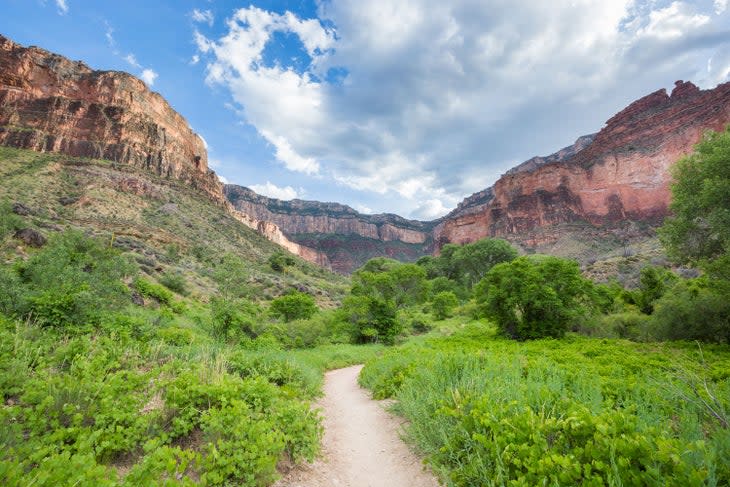
It’s important to acknowledge that this place was someone's home long before the U.S. Government declared it a national park. The United States has a long and sad history of Indigenous people being forced off their land. While we can't erase what's been done to the tribes of the Grand Canyon, as visitors we can make an effort to get to know the people who were here first and who continue to live here today.
Today, there are 11 federally recognized tribes associated with the Grand Canyon: the Havasupai, Hopi and Hualapai tribes, the Navajo and Yavapai-Apache nations, the Pueblo of Zuni and the Southern Paiute including the Kaibab, Las Vegas and Moapa bands of Paiute Indians, the Paiute Indian Tribe of Utah and the San Juan Southern Paiute Tribe.
While the stories and histories of these people and their connection to the Grand Canyon are incredible, they are by no means relegated only to the canyon's past. People from the 11 associated tribes live vibrant lives in and around the Grand Canyon today. They are park rangers and river rafting guides and conservationists. Some live in the canyon, some live near the canyon and some live far away. They are as diverse and varied as the shades of color that stripe the canyon walls.
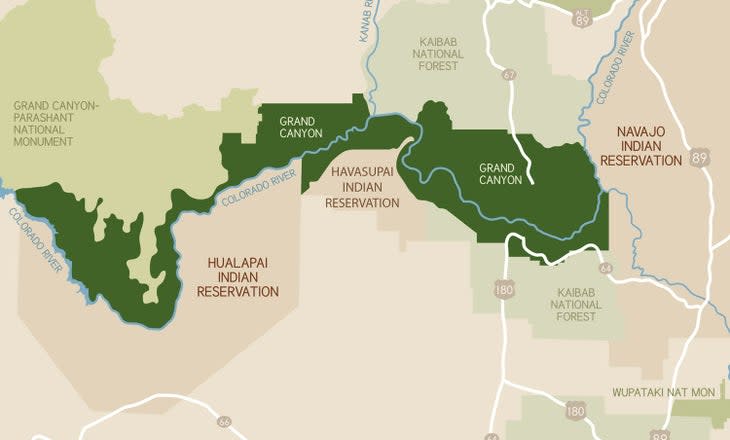
Like any culture, the histories of these people are vast. Justice cannot be done to thousands of years of history in a few paragraphs, but we hope this introduction to the three tribes that share borders with the national park will help get you started on your journey to learning more.
Havasupai Tribe in the Grand Canyon
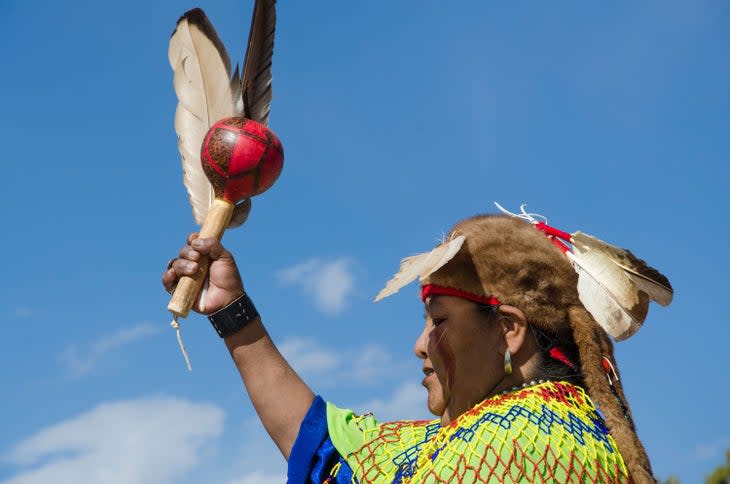
The Havasupai, meaning "people of the blue-green waters" have called this part of Arizona home for more than 1,000 years. The Insta-famous Havasu Falls, and the village of Supai, are on the Havasupai Reservation deep in a canyon that serves as a tributary to the Colorado River.
The Havasupai once lived all over what we now call Grand Canyon National Park and the surrounding area, their homeland spanning 1.6 million acres, which is the size of Delaware. In the winter, they lived along the canyon rim. In spring and summer, they farmed what is now called "Indian Garden" along the Bright Angel Trail.
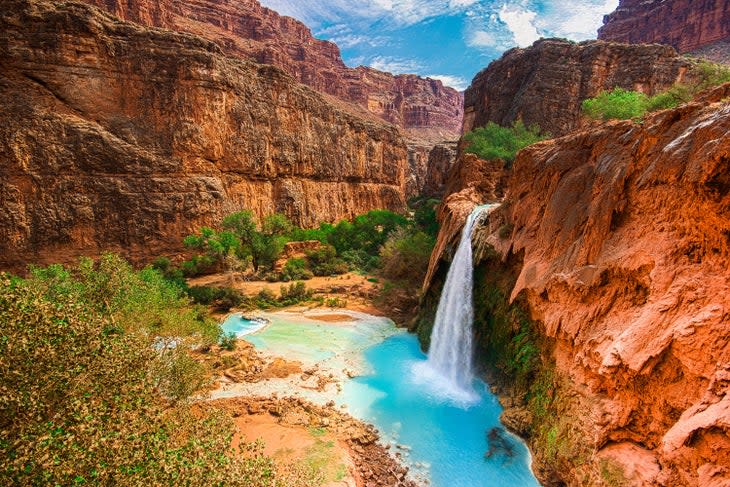
In 1882, the federal government took control of the land on the canyon's rim and shrank the Havasupai's home to 518 acres deep inside the canyon. In addition to their homeland being stolen and having to learn how to live year-round inside the canyon, they also contended with food shortages and disease caused by increased white settlers in the area.
In 1975, the reservation was expanded to 185,000 acres, with an additional 95,300 acres managed by the National Park Service, but available for Havasupai use.
Today, approximately 400 tribal members live on the reservation at the bottom of the canyon, only accessible by foot, mule or helicopter, with tourism driving most of their economy.
Hualapai Tribe in the Grand Canyon
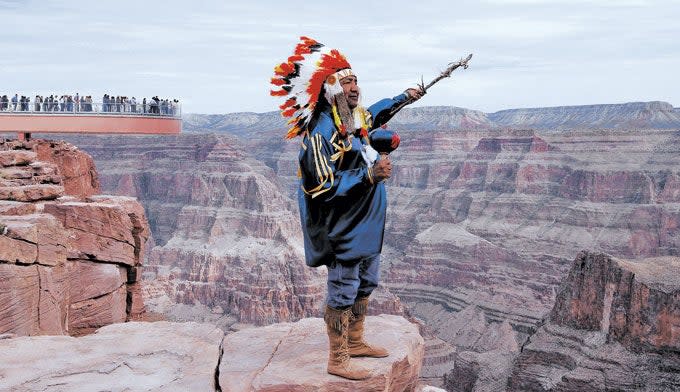
The Hualapai (pronounced Wal-lah-pie) once hunted, traded and lived on more than 7 million acres of land in and around the Grand Canyon together with the Havasupai, the Yavapai and the Pai-Pai people. There's archaeological evidence that the Hualapai's ancestors lived near the modern location of the Hoover Dam as far back as 600 A.D. The Hualapai gardened, built small rock dams and moved seasonally following the life cycles of wild plants. Their traditional lands are rich in red pigment, which they traded with other tribes.
In 1865, the Hualapai War broke out between the Hualapai and the United States. The Hualapai fought ardently to protect their lands and signed a peace treaty three years later. However, the prevalence of natural resources like copper, gold and uranium on Hualapai lands meant the peace deal didn't last for long. The U.S. Army removed the Hualapai from their lands and forced them to march almost 150 miles to a reservation on what is now the California-Arizona border. Starvation and sickness sent many fleeing back to their homelands, where tribal members petitioned the government for a reservation. Just 1 million acres along the western portion of the Grand Canyon was granted to them in 1883.
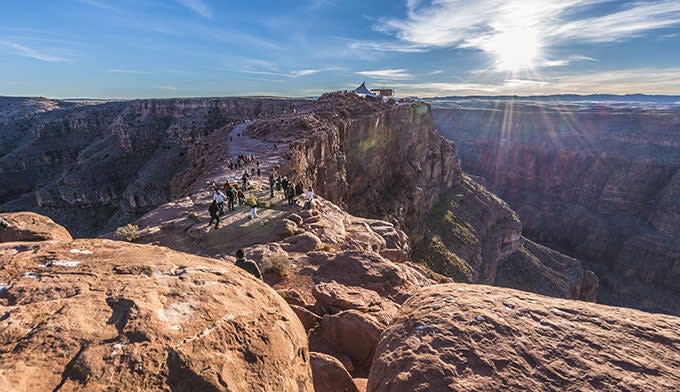
Today, around 1,300 Hualapai live on the reservation, many in the capital of Peach Springs. Their economy is heavily dominated by tourism, including Grand Canyon West. A visit to this part of the canyon is a must for many, thanks to the incredible architectural marvel that is the glass-bottomed Skywalk, along with helicopter and rafting tours. When you visit, don't let the fun keep you from learning more about these incredibly resilient people. Explore Eagle Point to see how the tribe traditionally lived, watch the Bird Singers perform their traditional dances and learn more about their history at the visitor center.
Navajo Nation in the Grand Canyon
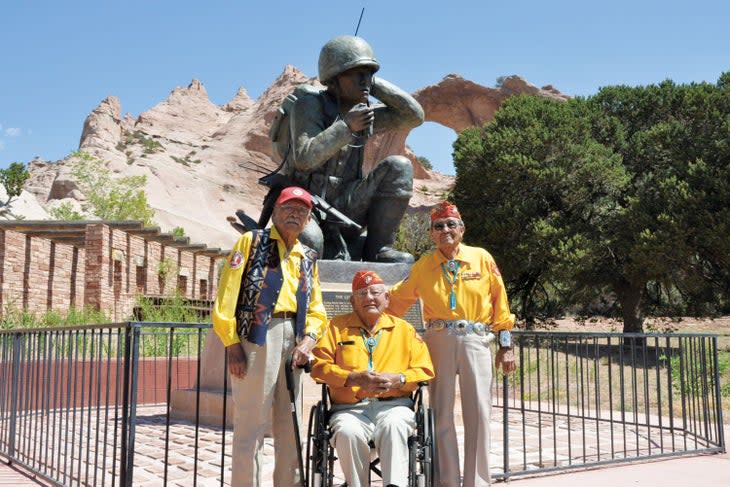
The Navajo Nation is the largest federally recognized tribe in the United States today--both in population and geographical area. While the current reservation isn't as large as their traditional homelands, the Navajo Nation encompasses 27,000 square miles to the east of Grand Canyon National Park including parts of Arizona, New Mexico and Utah. These people, called the Dine (pronounced Dee-nay), migrated to the Southwest sometime between 1400-1600 A.D., where they adopted cultural practices from other groups in the area. They transitioned from hunter-gatherers to farmers and then began to herd sheep and weave now famous blankets from their wool. They adopted silver working from the Spanish and make the gorgeous turquoise and silver jewelry that is now an integral part of the Southwest.
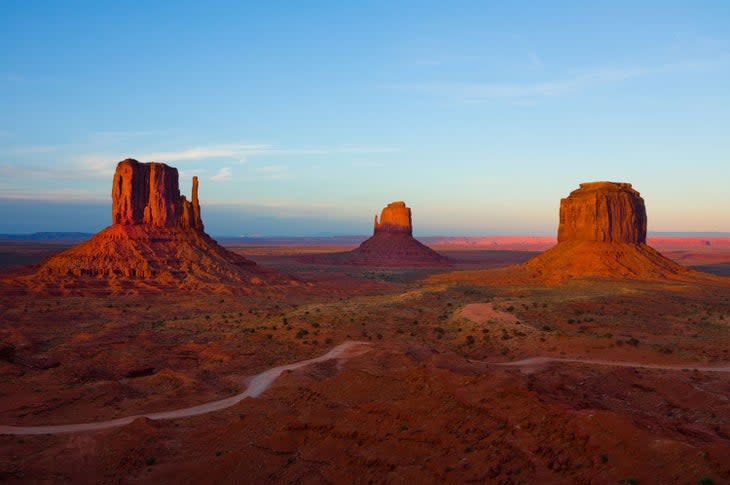
In the early 1860s, the U.S. Army, led by Colonel Kit Carson, led a scorched earth campaign against the Dine, destroying their crops and killing many of them. It ended in what was known as "The Long Walk" in 1864, where 9,000 Dine were forced to walk more than 300 miles to Fort Sumner, N.M., and were imprisoned. In 1868, a treaty was signed and the Dine were allowed to return to parts of their homelands on what is now the Navajo Nation.
In World War II, the famous "Navajo Code Talkers" enlisted in the U.S. military and evaded the Japanese using their own language. Navajo remains one of the most widely spoken Native American languages today.
Now days, the Navajo Nation's economy is diverse and relies heavily on mining and tourism. There are many iconic parks located on the reservation including Antelope Canyon, Canyon de Chelly and Monument Valley.
Learn More
There are many opportunities to learn more about the Indigenous people of the Southwest. In Grand Canyon National Park, head to the Desert View area where you'll find cultural demonstrations from tribal artisans most weeks throughout the summer. Visit Grand Canyon West, managed by the Hualapai Tribe, to learn more about their stories. As you visit all the beautiful places that the Southwest has to offer, pay attention to whose land you're on and what stories they have to tell about the past, the present and the future.
For exclusive access to all of our fitness, gear, adventure, and travel stories, plus discounts on trips, events, and gear, sign up for Outside+ today.

